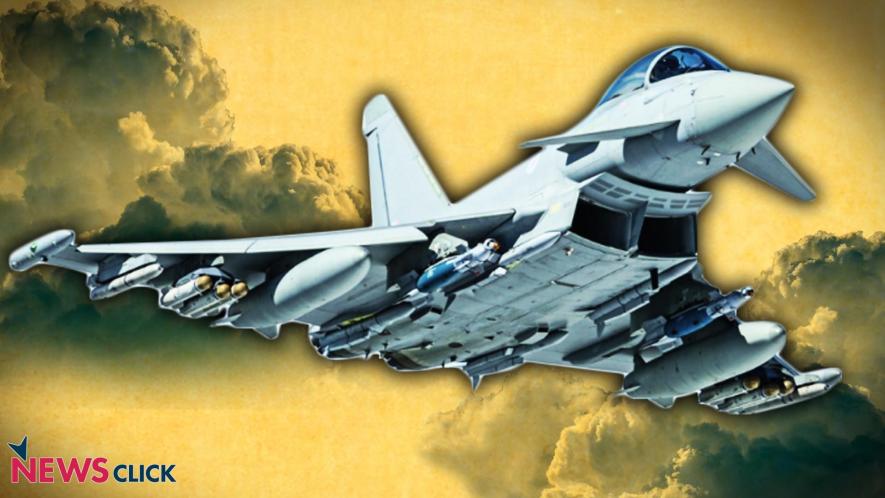Rafale Deal: Why Did the Modi Government Rush to get CCS Approval?

Did the Narendra Modi government rush to get approval from the high-powered Cabinet Committee on Security on August 24, 2016 for the Inter Governmental Agreement (IGA) with France for the 36 aircraft Rafale deal? Was due diligence done to get all the documents vetted by the Air Headquarters before that? Was a proper drill done on issues related to national security, especially after sensitive information was published on August 23, 2016 by an Australian newspaper on India’s Scorpene submarines?
These are some questions that beg answers after following the sequence of events leading up to the signing of the IGA with France on the controversial Rafale deal
Para 27 of the Narendra Modi Government’s submission to the Supreme Court on the process it followed for the purchase of 36 Rafale from France in flyaway condition, says: “The INT (Indian Negotiating Team) report and the proposal for obtaining the approval of the Cabinet Committee on Security (CCS) was processed in Ministry of Defence. After inter-ministerial consultation with Finance Ministry and Ministry of Law & Justice, the proposal was placed before the Cabinet Committee on Security on 24th August 2016. The approval of Cabinet Committee on Security (CCS) for signing the IGA (Inter Governmental Agreement) for procurement of 36 Rafale aircraft was accorded on 24th September, 2016.”
This following sequence of events is very intriguing for a certain reason which no one has discussed yet.
On August 23, 2016, Australian newspaper, The Australian, published information culled from 22,750 pages of classified data related to India’s Scorpene submarines, built in collaboration with French shipbuilder, DCNS. The Australian wrote: “The leaked DCNS data details the secret stealth capabilities of the six new Indian submarines, including what frequencies they gather intelligence at, what levels of noise they make at various speeds and their diving depths, range and endurance” — all sensitive information that is highly classified.
As per the leak, the data tells the submarine crew where on the boat they can speak safely to avoid detection by the enemy. It also discloses “magnetic, electromagnetic and infra-red data as well as the specifications of the submarine’s torpedo launch system and the combat system.”
After such details of the data were published, any government that takes national security seriously would have been busy finding out more about the leak of sensitive classified information, especially when the report says “The stunning leak… details the entire secret combat capability of the six Scorpene-class submarines...”
Soon after this, news Agency ANI tweeted quoting the then Defence Minister Manohar Parrikar saying that he came to know about this leak at midnight of August 23. Most newspapers carried the story on August 24, 2016. Business Standard carried a detailed report which said the Defence Minister had asked the navy chief to personally inquire about the leak in detail. “What I understand is that there is a hacking (from DCNS). We will find out all those things… maybe in a couple of days we will be able to tell you”, the newspaper quoted Parrikar as saying.
A Defence Ministry press release on August 24, morning at 10:30, reads: “A case of suspected leak of documents related to Scorpene submarines has been reported by a foreign media house. The available information is being examined at Integrated Headquarters, Ministry of Defence (Navy) and an analysis is being carried out by the concerned specialists. It appears that the source of leak is from overseas and not in India.”
From this and other media reports, it is clear that the Defence was too busy finding out the veracity of the leaked information. A source who was familiar with the issue said on condition of anonymity that “all the senior officers had to rush to the HQ in the wee hours and it was a mad day” for everyone.
But, interestingly, the Modi government’s Cabinet Committee on Security, which includes the Prime Minister, Home Minister, Finance Minister, Defence Minister and Minister of External Affairs, seemed to have been in a hurry to approve the IGA for procuring 36 Rafale with France in its meeting held on August 24, 2016.
This raises some questions: 1) When the serious leak of sensitive and classified information related to Indian naval submarines emanated from a French company and from France, what was the tearing hurry to convene the CCS meeting to approve the IGA with France? 2) Is this how the government – especially one led by a political party that preaches nationalism – takes decisions when it comes to national security?
On January 25, 2015, the Ministry of External Affairs published an India-France Joint Statement on the occasion of the visit of French President Francois Hollande to India. Para 13, under the heading ‘Defence’ states: “The two Leaders welcomed the conclusion of the Inter-governmental Agreement (IGA) on the acquisition of 36 Rafale fighter aircrafts in flyaway condition, except for some financial issues relating to the IGA which they agreed must be resolved as soon as possible.”
This means that the terms & conditions of the IGA were finalised as early as January 2016 and only financial negotiations had to be completed. But, according to sources close to the development, who have seen documents related to the correspondence between Air Headquarters, Defence Ministry and the Ministry of Law & Justice as late as September 24, 2016, a day after India signed the IGA with France, said vetting of the terms & conditions was still going on.
As per sources, note number N-8 from (D-Air 1) Ministry of Defence, signed by Devendra Kumar, Under Secretary, Special Desk, on September 20, 2016, para 3 & 4 reads: “(3) However, suggestions/advice of MoL&J was silent on 'Technical Arrangement which is an essential Annexure to the lGA. (4). Even MoD (Fin) had raised this issue in their observations while vetting the Draft IGA and Supply Protocols. MoD (Fin) had stated that the 'Technical Arrangement' document has not been vetted by MoLJ. The same may also be got vetted by MoLJ.” This communication went on and the last comment on the said note was signed on September 24, 2016 – a day after India signed the IGA with France, and it reads: “It would be better to get the Technical Arrangement vetted by LA (Def)”. (LA=Legal Adviser).
The entire sequence of events, therefore, raise serious issues and concerns related to national security. The way the Modi government rushed to get CCS approval, the Air HQ complaining that the Law Ministry was not vetting certain parts of the documents even after signing the IGA, raises more questions on the rationale behind cancellation of the 95% negotiated Request for Proposal for the 126 MMRCA (medium multi-role combat aircraft) and a unilateral announcement by Prime Minister Modi in France to procure 36 Rafale in flyaway condition.
(Ravi Nair broke the story of the Rafale scam and is writing a book on the subject.)
Get the latest reports & analysis with people's perspective on Protests, movements & deep analytical videos, discussions of the current affairs in your Telegram app. Subscribe to NewsClick's Telegram channel & get Real-Time updates on stories, as they get published on our website.





















